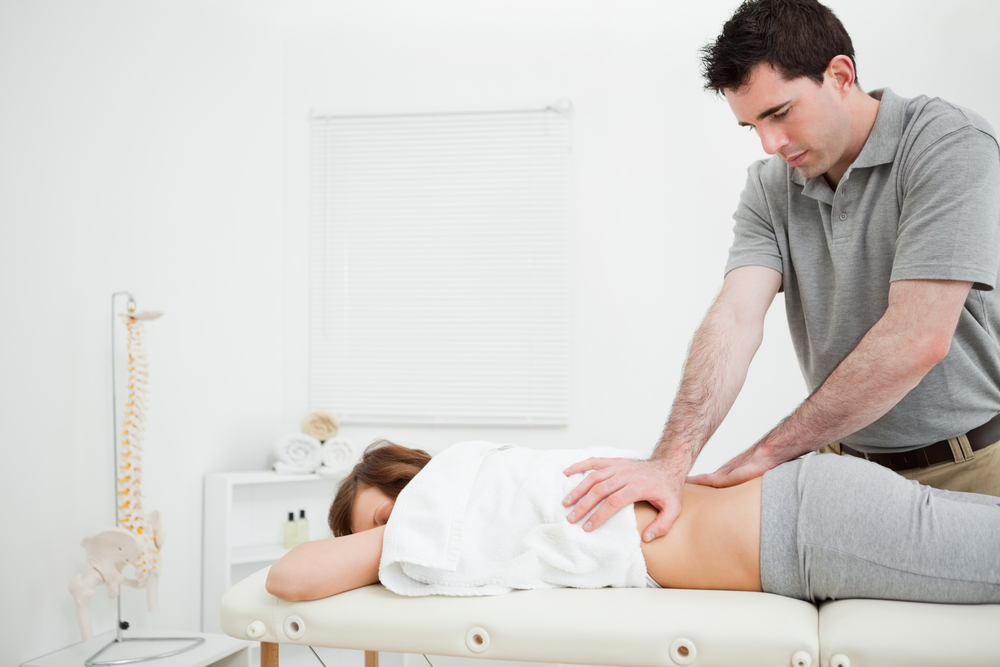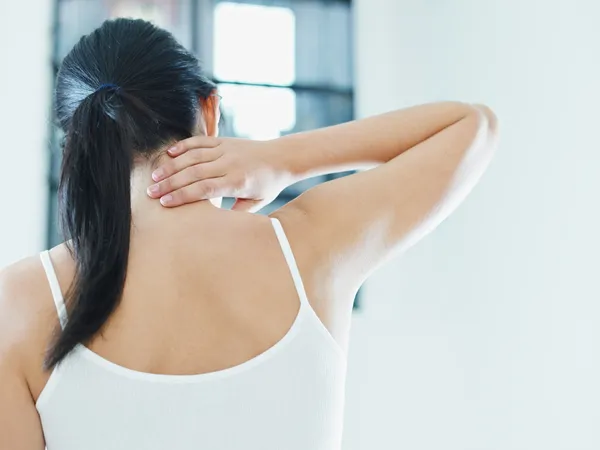Just as it sounds, spinal stenosis is a condition that affects the spine by narrowing the spinal column and compressing the spinal cord. It’s also sometimes referred to as pseudo claudication, central spinal stenosis, or foramina spinal stenosis.
This condition isn’t often heard or talked about, so you likely don’t know much about it! If that’s the case, then continue reading to find out more about spinal stenosis, such as the common symptoms and causes, how it is diagnosed, and the possible forms of treatment…
1. What Is It?
Our spine is the pillar of support for our posture and stability. The spine consists of a column of bones that run up our back, which are referred to as vertebrae. It is what allows us to sit up straight, twist, and turn.
The spine is very delicate, because it is made up of nerves that run through the vertebrae, conducting signals to the brain and the rest of the body. “The surrounding bone and tissues protect these nerves. If they’re damaged or impaired in any way, it can affect functions like walking, balance, and sensation,” writes Healthline.
According to WebMD, spinal stenosis typically occurs due to arthritis that causes the spinal column to narrow and compresses the spinal cord. Healthline explains that the process is usually gradual, and it can occur anywhere along the spine. And if the narrowing is extensive, it can compress the nerves and cause a slew of other symptoms.
2. Types of Spinal Stenosis
There are two different types of spinal stenosis: cervical stenosis and lumbar stenosis. These two types are differentiated by where they occur in the spine, and according to the Mayo Clinic, it’s possible to have more than one type.
Cervical stenosis is when the narrowing of the spine occurs in the neck, while lumbar stenosis occurs in the lower back. Lumbar stenosis is the most common form of spinal stenosis.
3. Symptoms of Cervical Spinal Stenosis
The Mayo Clinic explains that the symptoms caused by spinal stenosis depend on its severity. If the narrowing is minimal, then there will be evidence of the condition on a magnetic resonance imaging (MRI) or computed tomography (CT) scan, but other than that, there might not be any symptoms. In other cases, the symptoms will come on gradually and slowly and differ depending on the location and what nerves are affected.
When it comes to cervical spinal stenosis, there is often numbness, tingling or weakness in the arms or hands. A person might also have problems with walking due to issues with balance. Since it is located in the neck, it will often cause neck pain.
4. Symptoms of Lumbar Spinal Stenosis
As previously mentioned, lumbar spinal stenosis occurs in the lower back. The symptoms associated with this type of spinal stenosis include numbness or tingling in the legs or feet. A person could also experience weakness in their legs or feet, as well as “pain or cramping in one or both legs when you stand for long periods of time or when you walk, which usually eases when you bend forward or sit,” writes the Mayo Clinic. And not surprisingly, lumbar spinal stenosis often causes back pain. In addition to all this, in severe cases, it can cause bowel or bladder dysfunction in the form of urinary urgency or incontinence.
Healthline points out that people with spinal stenosis can often find relief when they sit down, but the pain will just return once they begin walking and standing again.
5. Causes of Spinal Stenosis
Spinal stenosis can be caused by a number of different things. Two of the most common causes are aging and arthritis. According to WebMD, arthritis occurs when there is a breakdown of cartilage, “the cushiony material between your bones,” and the growth of bones. Healthline expands by writing that as our body ages, it goes through some degenerative processes, “tissues in your spine may start to thicken, and bones may get bigger, compressing your nerves.”
Age can also cause conditions such as osteoarthritis and rheumatoid arthritis, both of which cause inflammation that can contribute to spinal stenosis. “Osteoarthritis can lead to disc changes, a thickening of the ligaments of the spine and bone spurs,” writes WebMD. This can also put pressure on the spinal cord and nerves.
6. Conditions That Can Cause Spinal Stenosis
In addition to aging and arthritis, there are other conditions that can cause spinal stenosis, including “spine defects at birth, a naturally narrow spinal cord, spinal curvature, or scoliosis, Paget’s disease of the bone, which causes abnormal bone destruction and regrowth, bone tumors,” as well as achondroplasia, which is a form of dwarfism, writes Healthline.
WebMD also lists some other potential causes including any injury that might have caused a fracture or inflammation of the spine or a herniated disc, which occurs when the cushions are cracked and material seeps into the spinal cord and nerves.
7. Risk Factors
There are certain factors that can increase a person’s risk for developing spinal stenosis. As we previously mentioned, the two main causes of spinal stenosis are aging and arthritis. As a result, people over the age of 50 are at higher risk.
The Mayo Clinic notes that spinal stenosis can occur in younger people due to degenerative changes, but other conditions can also increase a person’s risk such as “trauma, congenital spinal deformity such as scoliosis, and a genetic disease affecting bone and muscle development throughout the body.”
8. How is it Diagnosed?
We previously mentioned that, in some cases, spinal stenosis will not cause any symptoms, but it will appear on an MRI or CT scan. In order to diagnose this condition, a doctor will ask a few questions about your medical history and order either an X-ray, MRI, or CT scan, explains WebMD.
9. Treatment for Spinal Stenosis
There are several different forms of treatment available for people with spinal stenosis. WebMD lists medication as the first option. Since back and neck pain are two of the common symptoms, a patient could turn to pain remedies, such as aspirin, acetaminophen (Tylenol), ibuprofen (Advil or Motrin), or naproxen (Naprosyn) for short-term relief. Other medications that might be prescribed by a doctor include muscle relaxants or anti-seizure medications to relieve muscle spasms and damaged nerves.
The next treatment option that WebMD lists is corticosteroid injection. “Your doctor will inject a steroid such as prednisone into your back or neck,” writes the source. “Steroids make inflammation go down. However, because of side effects, they are used sparingly,” adds the source.
The other options are anesthetics, exercise, and assistive devices (such as a brace, corset, or walker). In severe cases, surgery might be a viable option. This is only for people who have difficulty walking or issues with their bladder or bowel, says WebMD. There are risks associated with surgery, so you need to talk to your doctor to find out what would work best for you.
10. What You Can Do at Home
There are a number of things that can be done at home to help relieve the symptoms of spinal stenosis. One of the best things to do is exercise, says WebMD. It doesn’t have to be strenuous or time consuming. It can simple as 30-minutes of walking every other day.
You can also use a hot or cold compresses. Heat helps loosen up the muscles, while cold reduces inflammation. You can use a compress on either the neck or lower back, depending on where the stenosis is located. If you don’t have a compress, try taking a hot shower.
WebMD also lists practicing good posture by standing up straight, sitting in a supportive chair, or sleeping on a firm mattress. When lifting heavy objects, always bend from the knees and do not put any strain on your back.
11. Exercises for Spinal Stenosis
Even though spinal stenosis causes back pain and sometimes difficulty moving, Healthline explains that exercise and movement in general, are crucial to overall health. It can improve flexibility, balance, and enable a person to move better. People with spinal stenosis should start stretching every day, several times a day.
If you were someone who didn’t exercise prior to developing this condition, it’s important that you start (but take it slow). Begin with only a few minutes a day and work your way up to 30-minutes, three times a week. If exercise continues to be too painful, Healthline recommends taking the exercise routine into the pool. “The buoyancy of the water makes it easier to move and get full range of motion,” writes the source.
To learn about the specific exercises and stretches that can help strengthen your back and abdominal muscles, you should consult with your doctor or physical therapist. In severe cases a back brace might be needed for extra support.
12. Long-Term Outlook
While spinal stenosis is serious and can have a huge impact on a person’s life, many people with this condition live very full and active lives. The biggest thing is that they will have to make modifications when it comes to physical activity and some might continue to struggle with pain following treatment or surgery, writes Healthline.















